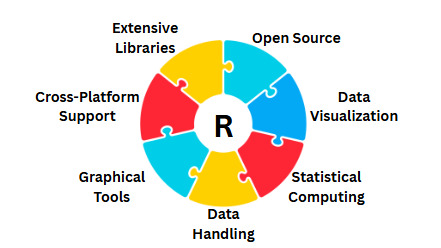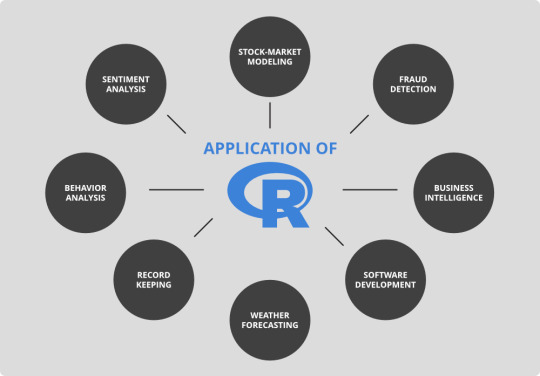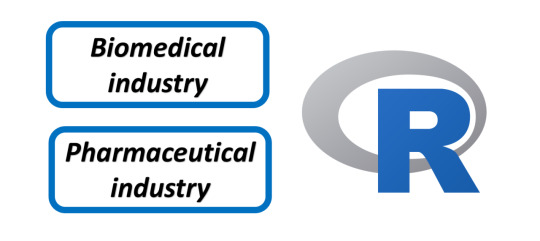#datascience2025
Explore tagged Tumblr posts
Text
Top Certifications for 2025 to Advance Your Career in Data Science

Introduction: Why Data Science Certifications Matter in 2025
In today’s data-driven economy, the demand for skilled data science professionals continues to surge across industries such as finance, healthcare, e-commerce, logistics, and manufacturing. As companies strive to make data-centric decisions, certifications in data science have become a vital tool for validating a candidate’s expertise, especially in a competitive job market.
In 2025, certifications not only enhance your knowledge base but also demonstrate your commitment to continuous learning, making your profile more attractive to recruiters and hiring managers. This article explores the top data science certifications in 2025 that can significantly boost your career.
1. IBM Data Science Professional Certificate (Coursera)
Overview
Offered by IBM via Coursera, this beginner-friendly certification provides a solid foundation in data science. It includes hands-on projects using Python, SQL, data visualization, and machine learning tools.
Why It’s Valuable in 2025
Covers end-to-end data science workflows.
Teaches practical tools like Jupyter Notebooks, Pandas, and Scikit-learn.
No prerequisites required, making it accessible to newcomers.
Certification Highlights
Duration: 3 to 6 months (self-paced)
Cost: Free trial; ~$39/month (Coursera subscription)
Skills Covered: Python, SQL, data visualization, predictive modeling, machine learning basics
Credential Provider: IBM
2. Google Advanced Data Analytics Professional Certificate
Overview
Launched under Google’s Career Certificates program, this course targets learners ready for mid-level or advanced roles in analytics and data science.
Why It’s Valuable in 2025
Focuses on Python, R, regression models, and data ethics.
Designed to help learners move from business analysts to data scientists.
Offered through Coursera with interactive projects and cloud integration.
Certification Highlights
Duration: ~6 months (at 10 hours/week)
Cost: ~$49/month (Coursera subscription)
Skills Covered: R programming, Python, machine learning, BigQuery, business statistics
Credential Provider: Google
3. Microsoft Certified: Azure Data Scientist Associate
Overview
Perfect for professionals working with cloud-based data platforms, this certification focuses on machine learning operations (MLOps) on Azure.
Why It’s Valuable in 2025
Ideal for professionals aiming to deploy models in production environments.
Microsoft Azure is among the top cloud service providers used globally.
Certification is highly respected in enterprise environments.
Certification Highlights
Exam Code: DP-100
Cost: $165 (may vary by location)
Skills Covered: Azure ML Studio, automated ML, responsible AI, data pipeline integration
Credential Provider: Microsoft
4. Certified Data Scientist – Data Science Council of America (DASCA)
Overview
DASCA certifications are well-recognized globally, offering vendor-neutral training and credentialing for data professionals at various levels.
Why It’s Valuable in 2025
Offers different levels: Associate (ABDA), Senior (SDS), and Principal (PDS).
Backed by strong frameworks aligned with industry needs.
Focuses on both theoretical knowledge and practical applications.
Certification Highlights
Levels: ABDA, SDS, PDS
Cost: $585 to $775
Skills Covered: Big Data, machine learning, data engineering, Hadoop, Spark
Credential Provider: DASCA
5. HarvardX's Data Science Professional Certificate (edX)
Overview
Offered by Harvard University on edX, this course series provides an academic and practical approach to core data science concepts.
Why It’s Valuable in 2025
Taught by Harvard professors.
Covers R programming extensively—important for statistical modeling.
Structured in a university-grade format with assessments.
Certification Highlights
Duration: ~9 months
Cost: $792 for full program (can audit for free)
Skills Covered: R, statistics, data wrangling, machine learning, linear regression
Credential Provider: Harvard University
6. Certified Specialist in Predictive Analytics (CSPA) – IABAC
Overview
This certification from the International Association of Business Analytics Certification (IABAC) is ideal for professionals focused on statistical modeling and business forecasting.
Why It’s Valuable in 2025
Focuses on applied predictive analytics for business outcomes.
Emphasizes tools like Python, R, and statistical packages.
Widely recognized in European and Asian job markets.
Certification Highlights
Duration: 3 to 6 months
Cost: ~$300
Skills Covered: Time-series forecasting, regression, clustering, business applications
Credential Provider: IABAC
7. TensorFlow Developer Certificate
Overview
This certificate validates your ability to build and train deep learning models using TensorFlow, an essential skill for AI-focused roles.
Why It’s Valuable in 2025
TensorFlow remains one of the most used deep learning frameworks.
Focuses on hands-on skills in model training and deployment.
Great for candidates aiming at ML engineer or AI roles.
Certification Highlights
Exam: 5-hour coding test
Cost: $100
Skills Covered: CNNs, NLP, TensorFlow libraries, model tuning
Credential Provider: TensorFlow (Google Brain Team)
8. Stanford’s Machine Learning Certificate (Coursera)
Overview
One of the most popular and enduring online ML courses, taught by Andrew Ng, co-founder of Coursera and AI pioneer.
Why It’s Valuable in 2025
Widely accepted by recruiters as proof of understanding ML concepts.
Updated versions include TensorFlow and practical deep learning tools.
Strong academic credibility.
Certification Highlights
Duration: 11 weeks
Cost: ~$79
Skills Covered: Linear regression, neural networks, support vector machines
Credential Provider: Stanford University via Coursera
9. Cloudera Data Platform Generalist Certification
Overview
Cloudera offers certifications aimed at those working with big data platforms and distributed data processing systems.
Why It’s Valuable in 2025
Covers Hadoop, Spark, Hive, and Cloudera’s data lifecycle.
Great for professionals working in data lakes and big data infrastructure.
Demand for big data engineers remains strong.
Certification Highlights
Exam: Proctored online
Cost: $300
Skills Covered: Big data workflows, data pipeline building, Spark, Hadoop
Credential Provider: Cloudera
10. AWS Certified Machine Learning – Specialty
Overview
This certificate validates your expertise in building, training, and deploying ML models using Amazon Web Services (AWS).
Why It’s Valuable in 2025
Cloud ML is a growing domain with AWS as the leader.
Ideal for MLOps professionals or cloud data scientists.
Recognized globally by top employers.
Certification Highlights
Exam Duration: 3 hours
Cost: $300
Skills Covered: AWS SageMaker, model deployment, feature engineering, ML pipelines
Credential Provider: Amazon Web Services
How to Choose the Right Certification in 2025
Career Stage: Beginners should start with IBM, Google, or HarvardX. Professionals can pursue DASCA, AWS, or Azure certifications.
Domain Focus: Choose specialized certs like TensorFlow or CSPA if you're into ML or analytics.
Budget: Consider your budget, as some costs are as low as $39/month while others go beyond $500.
Learning Style: Academic learners may prefer edX or Coursera. Hands-on learners can opt for TensorFlow or AWS.
Conclusion: Certification Is Your Career Catalyst
As data science continues to evolve, staying relevant means continuously updating your skills. Earning a data science certification in 2025 is one of the most effective ways to validate your knowledge, boost your employability, and stand out in an increasingly competitive job market.
Whether you’re starting out or moving up the ladder, these certifications can serve as key milestones in your journey toward becoming a successful data science professional.
0 notes
Text

Python vs R in 2025: Which Language Is Better for Data Science?
In the fast-evolving field of data science, one question continues to spark debate: Python or R? As we step into 2025, this discussion remains highly relevant for data professionals, students, and organizations trying to build robust data solutions.
Both languages have their strengths, dedicated communities, and unique ecosystems—but which one is better for data science in 2025?
Let’s break it down.
🚀 Overview: Python and R in a Nutshell
Python is a general-purpose programming language that excels in flexibility, ease of use, and integration across the entire software development lifecycle.
R was built specifically for statistical computing and data visualization. It remains a favorite among statisticians, academic researchers, and niche analytics teams.
🔍 Popularity & Community Support
Python
Most popular programming language in the world as of 2025 (per TIOBE and Stack Overflow).
Huge ecosystem of libraries, frameworks, and integrations (e.g., Pandas, scikit-learn, TensorFlow, FastAPI).
Massive community support—easy to find tutorials, GitHub repos, and troubleshooting help.
R
Still widely used in academia, bioinformatics, and research-heavy sectors.
Strong support from statisticians, with purpose-built libraries like ggplot2, caret, and shiny.
The community is loyal, but smaller compared to Python’s.
✅ Verdict: Python wins in popularity and long-term ecosystem growth.
🧠 Learning Curve & Usability
Python
Simple, readable syntax that resembles plain English.
Ideal for beginners in both programming and data science.
Versatile—can be used for web development, automation, machine learning, and more.
R
Steeper learning curve, especially for those new to programming.
More intuitive for statisticians and data analysts with a mathematical background.
Syntax can feel inconsistent for programmers transitioning from other languages.
✅ Verdict: Python is more beginner-friendly and versatile.
📊 Data Analysis & Visualization
Python
Offers data manipulation and visualization through pandas, matplotlib, seaborn, and plotly.
Interactive dashboarding with Dash, Streamlit, or Bokeh.
Great for combining analytics with automation or app development.
R
Built for data exploration and visualization from the ground up.
Tools like ggplot2 and dplyr are unmatched for creating clean, elegant plots and handling complex statistical data.
Shiny apps allow quick deployment of interactive dashboards—ideal for internal analytics tools.
✅ Verdict: R edges ahead in statistical visualization and reporting tasks.
🤖 Machine Learning & AI
Python
Dominates in ML and AI development with libraries like scikit-learn, TensorFlow, PyTorch, and XGBoost.
Seamless integration with cloud platforms (AWS, GCP, Azure).
Rapid development of end-to-end AI pipelines.
R
Good for model prototyping using packages like caret, mlr3, and xgboost (also available in Python).
More limited in deep learning frameworks.
Mostly used for academic ML applications rather than production environments.
✅ Verdict: Python leads in ML, deep learning, and deployment.
🧪 Statistical Modeling
Python
Capable with statsmodels, SciPy, and PyMC, but not as intuitive for complex statistical techniques.
R
Designed with statistics in mind—everything from linear regression to time series and hypothesis testing is built-in.
More transparent for statistical modeling and custom formulas.
✅ Verdict: R is still the best for pure statistical analysis and research.
🏭 Industry Adoption & Job Market
Python
Used by major tech companies, banks, retailers, and startups.
In-demand skill for data scientist, ML engineer, and AI roles.
Many job listings require Python as a core skill.
R
More common in academic, healthcare, pharma, and government sectors.
Roles using R are often niche or research-focused.
✅ Verdict: Python dominates the job market in both volume and diversity.
⚙️ Integration & Deployment
Python
Easily deploy models via APIs, microservices, or cloud platforms.
Compatible with web frameworks like Flask, FastAPI, and Django.
Works smoothly in production environments.
R’s deployment is usually tied to Shiny or markdown reporting.
Limited support in production-ready environments.
Less preferred for integrating into scalable applications.
✅ Verdict: Python is more production-ready and scalable.
🏁 Conclusion
In 2025, Python is the clear winner for most data science applications—especially those involving machine learning, automation, and real-world deployment. Its versatility, simplicity, and massive support ecosystem make it a go-to language for data professionals.
However, R still holds strong in domains where advanced statistical modeling, academic research, or specialized data visualization is the core focus.
The best advice? Learn both if you can. But if you're just starting your data science journey or aiming for a career in industry, Python is the smarter investment.
#python#rstats#datascience2025#machinelearning#statisticalanalysis#dataanalytics#pythonvsr#mltools#datavisualization#ai2025
0 notes
Text
Uncovering the Real ROI: How Data Science Services Are Driving Competitive Advantage in 2025
Introduction
What if you could predict your customer’s next move, optimize every dollar spent, and uncover hidden growth levers—all from data you already own? In 2025, the real edge for businesses doesn’t come from owning the most data, but from how effectively you use it. That’s where data science services come in.
Too often, companies pour resources into data collection and storage without truly unlocking its value. The result? Data-rich, insight-poor environments that frustrate leadership and slow innovation. This post is for decision-makers and analytics leads who already know the fundamentals of data science but need help navigating the growing complexity and sophistication of data science services.
Whether you’re scaling a data team, outsourcing to a provider, or rethinking your analytics strategy, this blog will help you make smart, future-ready choices. Let’s break down the trends, traps, and tangible strategies for getting maximum impact from data science services.
Section 1: The Expanding Scope of Data Science Services in 2025
Gone are the days when data science was just about modeling customer churn or segmenting audiences. Today, data science services encompass everything from real-time anomaly detection to predictive maintenance, AI-driven personalization, and prescriptive analytics for operational decisions.
Predictive & Prescriptive Modeling: Beyond simply forecasting, top-tier data science service providers now help businesses simulate outcomes and optimize strategies with scenario analysis.
AI-Driven Automation: From smart inventory management to autonomous marketing, data science is fueling a new level of automation.
Real-Time Analytics: With the rise of edge computing and faster data streams, businesses expect insights in seconds, not days.
Embedded Analytics: Service providers are helping companies build intelligence directly into products, not just dashboards.
These services now touch nearly every business function—HR, operations, marketing, finance—with increasingly sophisticated tools and technologies.
Section 2: Choosing the Right Data Science Services Partner
Selecting the right partner is arguably more critical than the tools themselves. A good fit ensures strategic alignment, faster time to value, and fewer rework cycles.
Domain Expertise: Don’t just look for technical brilliance. Look for providers who understand your industry’s unique metrics, workflows, and regulations.
Tech Stack Compatibility: Ensure your provider is fluent in your existing environment—whether it’s Snowflake, Databricks, Azure, or open-source tools.
Customization vs. Standardization: The best data science services strike a balance between reusable IP and tailored solutions.
Transparency & Collaboration: Look for vendors who co-build with your internal teams, not just ship over-the-wall solutions.
Real-World Example: A retail chain working with a generic vendor struggled with irrelevant models. Switching to a vertical-focused data science services provider with retail-specific datasets improved demand forecasting accuracy by 22%.
Section 3: Common Pitfalls That Derail Data Science Projects
Despite strong intent, many data science initiatives still fail to deliver ROI. Here are common traps and how to avoid them:
Lack of a Clear Business Goal: Many teams jump into modeling without aligning on the problem statement or success metrics.
Dirty or Incomplete Data: If your foundational data layers are unstable, no algorithm can fix the problem.
Overemphasis on Accuracy: A highly accurate model that no one uses is worthless. Focus on adoption, interpretability, and stakeholder buy-in.
Skills Gap: Without a strong bridge between data scientists and business users, insights never make it into workflows.
Solution: The best data science services include data engineers, business translators, and UI/UX designers to ensure end-to-end delivery.
Section 4: Unlocking Hidden Opportunities with Advanced Analytics
In 2025, forward-thinking firms are using data science services not just for problem-solving, but for uncovering growth levers:
Customer Lifetime Value Optimization: Predictive models that help decide how much to spend and where to focus retention.
Dynamic Pricing: Real-time adjustment based on demand, inventory, and competitor moves.
Fraud Detection & Risk Management: ML models can now flag anomalies within seconds, preventing millions in losses.
ESG & Sustainability Metrics: Data science is enabling companies to report and optimize environmental and social impact.
Real-World Use Case: A logistics firm used data science services to optimize delivery routes using real-time weather, traffic, and vehicle condition data, reducing fuel costs by 19%.
Section 5: How to Future-Proof Your Data Science Strategy
Data science isn’t a one-time investment—it’s a moving target. To remain competitive, your strategy must evolve.
Invest in Data Infrastructure: Cloud-native platforms, version control for data, and real-time pipelines are now baseline requirements.
Prioritize Model Monitoring: Drift happens. Build feedback loops to track model accuracy and retrain when needed.
Embrace Responsible AI: Ensure fairness, explainability, and data privacy compliance in all your models.
Build a Culture of Experimentation: Foster a test-learn-scale mindset across teams to embrace insights-driven decision-making.
Checklist for Evaluating Data Science Service Providers:
Do they offer multi-disciplinary teams (data scientists, engineers, analysts)?
Can they show proven case studies in your industry?
Do they prioritize ethics, security, and compliance?
Will they help upskill your internal teams?
Conclusion
In 2025, businesses can’t afford to treat data science as an experimental playground. It’s a strategic function that drives measurable value. But to realize that value, you need more than just data scientists—you need the right data science services partner, infrastructure, and mindset.
When chosen wisely, these services do more than optimize KPIs—they uncover opportunities you didn’t know existed. Whether you’re trying to grow smarter, serve customers better, or stay ahead of risk, the right partner can be your unfair advantage.
If you’re ready to take your analytics game from reactive to proactive, it may be time to evaluate your current data science service stack.
#DataScience2025#FutureOfAnalytics#AdvancedAnalytics#AITransformation#MachineLearningModels#PredictiveAnalytics#PrescriptiveAnalytics#RealTimeData#EdgeComputing#DataDrivenDecisions#RetailAnalytics#SupplyChainOptimization#SmartLogistics#CustomerInsights#DynamicPricing#FraudDetection#SaaSAnalytics#MarketingAnalytics#ESGAnalytics#HRAnalytics#DataEngineering#MLOps#SnowflakeDataCloud#AzureDataServices#Databricks#BigQuery#PythonDataScience#CloudDataPlatform#DataPipelines#ModelMonitoring
0 notes
Text
Start your 2025 data science journey with the right steps—learn Python, SQL, statistics, data visualization, and machine learning. Build real-world projects and grow job-ready skills that align with today’s industry demands. Whether you're a student or a career switcher, this is your year to break into data science with confidence.
0 notes
Text
Why R Still Matters in the Data-Driven World of 2025
A Brief History of R
R, a language and environment for statistical computing and graphics, was conceived in the early 1990s by Ross Ihaka and Robert Gentleman at the University of Auckland, New Zealand. It was designed as a free and open-source alternative to expensive statistical software, democratizing data analysis and visualization. Over the years, R has evolved into a powerful tool embraced by data scientists, statisticians, and analysts worldwide. Its community-driven development model has resulted in a vast ecosystem of packages that enhance its core capabilities.

Why learn R
How R Differs from Python or Excel
While Python, Excel, and R are all popular tools for data manipulation and analysis, they serve different niches:
Python is a general-purpose programming language with extensive libraries for machine learning and data manipulation, such as NumPy, pandas, and TensorFlow. It is known for its versatility and readability.
Excel is a spreadsheet software that provides a user-friendly interface for organizing and analyzing data. It is ideal for small to medium-sized datasets and is widely used in business settings.
R, however, is specifically designed for statistical computing. Its syntax and functions are tailored for data analysis tasks. R excels in advanced statistical modeling, making it a go-to choice for statisticians and researchers.
Key Features of R for Statistical Computing
R offers a range of features that make it indispensable for statistical analysis:
Comprehensive Statistical Techniques: R provides a wide array of statistical tests, models, and data mining techniques directly out of the box.
Data Visualization: With packages like ggplot2, R allows users to create sophisticated and interactive graphics that help in data exploration and presentation.
Extensibility: R's package ecosystem is vast, with over 18,000 packages available on CRAN (Comprehensive R Archive Network), ensuring there is a tool for almost every statistical task.
Reproducibility: R Markdown and R scripts facilitate the documentation of analysis steps, ensuring that results can be reproduced and verified.

Feature of R
Where R Is Used Today
R's application spans a variety of fields, highlighting its versatility and robustness:
Academia: R is a staple in academic research, used for teaching statistics and research methods across disciplines.
Government: Agencies such as the U.S. Census Bureau leverage R for data analysis and reporting.
Healthcare: R is employed for bioinformatics, epidemiological research, and clinical trial data analysis.
Finance: Financial analysts use R for risk assessment, portfolio management, and predictive modeling.
Research Labs: R is a trusted tool in scientific research for data exploration and hypothesis testing.

Application of R Language
Real-World Hook: WHO and Pharma Companies
The World Health Organization (WHO) and pharmaceutical companies rely heavily on R for public health insights. During the COVID-19 pandemic, R was utilized for modeling the spread of the virus, analyzing vaccine efficacy, and tracking public health interventions. Pharmaceutical companies use R for drug discovery, clinical trial analysis, and regulatory submissions, underscoring its critical role in advancing healthcare outcomes.

Real World Application
FAQs
1. Is R difficult to learn for beginners?
R can have a steeper learning curve compared to Excel, but numerous online resources and communities can help beginners get started. Its powerful features make the initial effort worthwhile.
2. Can R handle large datasets efficiently?
While R is not inherently optimized for big data, packages like data.table and connections to databases or big data platforms like Hadoop can enhance its capability to handle large datasets.
3. How does R ensure the reproducibility of results?
R Markdown and version-controlled scripts promote reproducibility by documenting each step of the analysis, allowing others to replicate the results seamlessly.
4. Are there any industries where R should not be used?
R is less suited for real-time analytics or applications requiring high-speed computation, such as gaming or streaming services. However, for statistical analysis, it's highly effective.
5. What resources are available for learning R?
There are numerous free resources, including the R documentation, online courses on platforms like Coursera and edX, and community forums like RStudio Community and Stack Overflow.
Home
instagram
youtube
#RProgramming#DataDrivenWorld#StatsWithR#DataScience2025#AnalyticsTools#OpenSourceStats#RvsPython#TechForGood#ResearchWithR#SunshineDigitalServices#Instagram#Youtube
0 notes
Text
Explore the latest tools and trends in generative AI and data science for 2025 in this must-read blog: Generative AI and Data Science: Top Tools & Trends for 2025. Discover how emerging technologies are shaping innovation, enhancing workflows, and redefining business intelligence. This guide dives into powerful platforms, real-world applications, and future predictions that matter. Perfect for professionals, businesses, and tech enthusiasts looking to stay ahead of the curve. Don’t miss out on what’s next in AI-driven transformation.
#GenerativeAI#DataScience2025#AITools#TechTrends#AIInnovation#FutureOfData#BusinessIntelligence#MachineLearning#AIInsights
0 notes